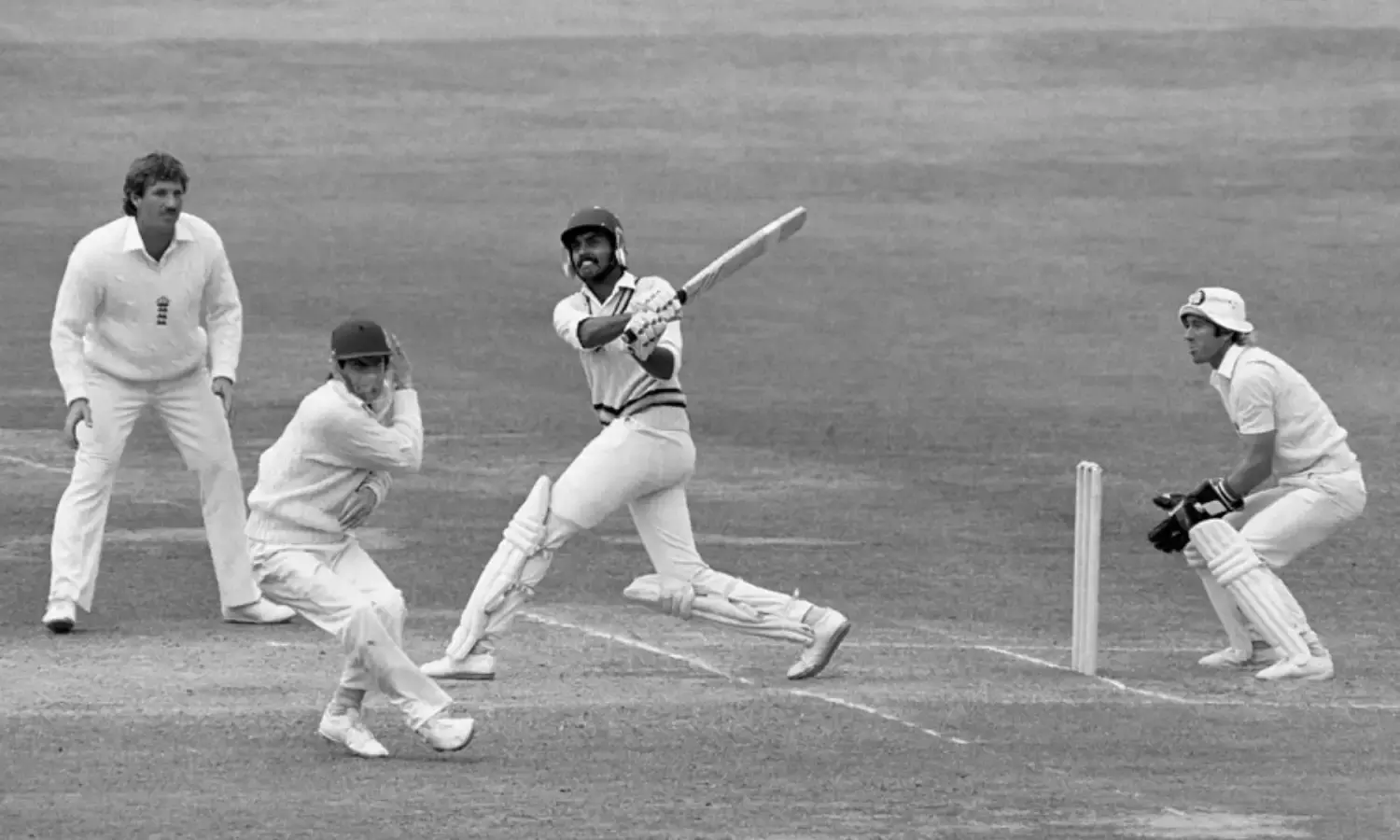The Partnership That Resurrected The Indian Team
Down Memory Lane
When the Indian team left for the tour of England in 1979 they clearly faced an uphill task both in the World Cup and in the four-Test series against England which was to be played immediately after the event.
The main concern centered round the bowling for the batting was considered strong enough. With batsmen like Sunil Gavaskar, Chetan Chauhan, Gundappa Viswanath, Dilip Vengsarkar, Mohinder Amarnath and Anshuman Gaekwad around it was a line-up that could successfully counter the England bowling.
The Indian bowling was another matter altogether. The famed spin quartet had virtually broken up with Erapalli Prasanna playing his last Test in Pakistan during the 1978-79 season. Bishen Bedi, Bhagwat Chandrasekhar and Srinivas Venkatraghavan were still around but they were clearly past their best. The selectors however picked the three as the main spinners. The opening bowlers were Karsan Ghavri and Kapil Dev.
The former was a fairly capable left arm seamer while the latter had emerged as the newest hero in Indian cricket. Just 20 and with not even a full year of international cricket under his belt Kapil Dev had already caught the eye with his pace bowling and attacking batting.
The Indians were up against an England side that was probably the best in the world. West Indies and Australia had been weakened by defections of their top players to Kerry Packer’s World Series Cricket while England had not been that badly affected. Moreover they were on a roll particularly at home having defeated Australia in 1977 and Pakistan and New Zealand the following year.
Away too their record was pretty impressive. They had shared contests in New Zealand and Pakistan in 1977-78 and the following season had walloped an emaciated Aussie side 5-1 in the Ashes contest. Moreover on the eve of the series against India they had made it to the final of the World Cup before going down to the mighty West Indies.
That India would find it difficult to qualify for the semifinal of the World Cup from their group was well known but no one could have bargained for what actually happened. After losing to West Indies and New Zealand India went down to a shock defeat at the hands of Sri Lanka, then still an associate member of the ICC. Losing all their three league matches and finishing at the bottom of the table meant that the Indians were not exactly confidence personified to take on a strong England side. The worst fears were confirmed when the hosts wrapped up the first Test at Birmingham by an innings and 83 runs with a day to spare.
At this stage almost everyone had accepted that India were in for a 4-0 drubbing. And this feeling gained momentum when India were shot out for 96 in the first innings of the second Test at Lord’s. England rubbed it in by replying with 419 for nine declared and despite rain interfering with play now and then there was still plenty of time for England to notch up a second innings victory.
Trailing by 323 runs India lost openers Gavaskar and Chauhan with 99 runs on the board. It was still midway through the fourth afternoon when Viswanath joined Vengsarkar. The outlook was as bleak as the weather but in between the showers the two batsmen held firm, displaying the traditional qualities of dedication, determination and concentration. They matched each other in strokeplay and run production even if their methods were slightly different in that Vengsarkar scored most of his runs through handsome drives while Viswanath got them through his trademark square cuts.
They made for an interesting contrast. At one end was the diminutive Viswanath, 30 the supreme touch artist who had been around the international circuit for a decade. At the other end was the tall Vengsarkar 23 and the newest batting star in Indian cricket who had already established himself at the crucial one drop position.
The England bowling in the hands of Ian Botham, Mike Hendrick, John Lever, Geoff Miller and Phil Edmonds was a pretty handy one but Vengsarkar and Viswanath steered India to 196 without further loss by stumps on the fourth day. There was a glimmer of hope that India could hold out for a draw as play resumed on the final day and again in between showers the two batsmen continued to defy the attack by a mixture of defence and elegant strokes.
Vengsarkar who had been out for a duck in the first innings was the first to get his hundred and Viswanath’s three figures too were soon on the board. Finally after the heroic third wicket partnership had added 210 runs in nearly 5-1/2 hours Vengsarkar was out for 103. Viswanath soon followed for 113 but by this time the match had been honourably saved and when rain finally stopped play India were 318 for four.
More to the point what the gallant duo of Viswanath and Vengsarkar had done was to resurrect the hopes of the touring side. After being hopelessly outclassed till they came together the Indians took on England on level terms thereafter. The rain ruined third Test at Leeds was all too predictably drawn with India matching England which meant that the series was still open going into the final Test at the Oval. And here the Indians made a superb bid to get to a formidable victory target of 438 but despite a great 221 by Gavaskar they fell just short closing at 429 for eight.
So the final result was England 1, India 0 and not the 4-0 rout that was largely anticipated after the first Test. And the fightback was traced to that third wicket stand of Viswanath and Vengsarkar. For its gallantly and for reviving the hopes of the touring squad it remains one of the most memorable partnerships in the history of Indian cricket.





